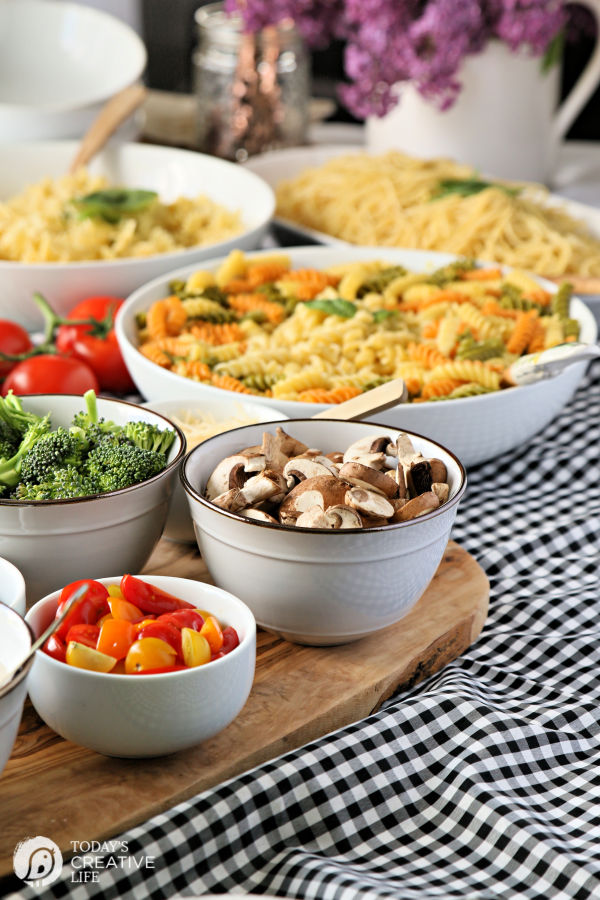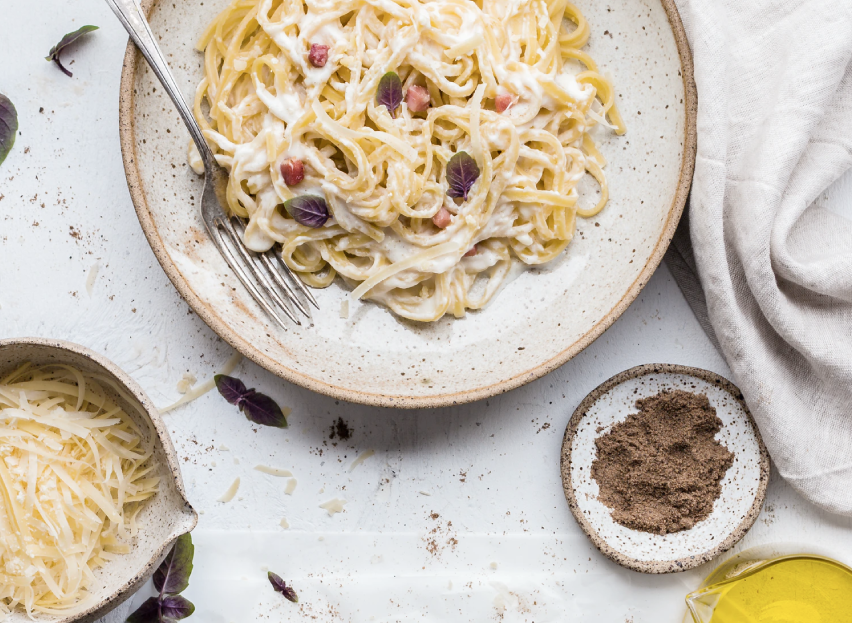
Then cover the pot to retain the heat. Any starch food does.

Serving pasta in a buffet-style setting is challenging.
How to keep pasta warm for pasta bar. How do you keep pasta moist. Use a larger pot. You dont want all the noodles to be dense in a tiny pot full of water.
Give it some room to freely. Pasta needs a lot of salt. Any starch food does.
Dont worry if your pasta is going to intake all. Use a lot of water. How to Keep Pasta Warm After Cooking 1.
When draining your pasta do it over your heatproof bowl. This keeps some of the pasta water which can be added back to the sauce for extra moisture and warmth. Then when the pasta has been fully drained empty the heatproof bowl or plate leaving a.
How to Keep Pasta Warm. I cook up extra and rinse in cold water to stop the cooking process. I add olive oil and store in a large ziplock baggy until needed then I heat in a microwave friendly bowl before serving.
You can also keep cooked and oiled pasta in a large crockpot on warm or in the oven in a large covered casserole dish until needed. You can serve by having 2 or 3 portable gas burners to heat sauce then toss pasta in itOr a chafer filled with boiling watersterno underneith to reheat pasta in a strainer and a 3 compartment chafer to keep sauces hot. Or pots of water in kitchen where pasta can be boiled water dipped brought out and placed in a chaffer.
Store warm pasta in a thermos. This is great for packing lunches or dinners. It also works well for keeping pasta warm for one or two people rather than for a full party.
Warm up a thermos by filling it with boiling water and letting the water sit for 10 minutes. Empty the thermos and fill it. Place the spaghetti dish on a heating tray.
The tray will go underneath your dish and keep the food warm for hours – until you turn the tray off. Transfer the cooked pasta back to the serving dishes and cover each bowl with a hot damp paper towel. Keep Your Pasta Warm in the Oven at 200 Degrees.
Transfer the pasta to a 200 degree oven with the door slightly open to keep warm. For best results do not leave the pasta in the oven. One of our favorite restaurants does a pasta bar and makes it look easythey have a couple of chefs with saute pans and you choose your ingredients veggies meats sauce pasta cheese and they cook up individual servingsTypical ingredients.
Onions garlic bell peppers mushrooms peas fresh spinach chicken bacon various kinds of pasta already cooked white sauce and marinara Parmesan. When the moisture leaves the pasta the noodles get sticky and clumpy. A coating of olive oil provides a barrier keeping the moisture in the air out and your pasta fresh and separated.
Keep extra pasta that is cooked on the ready by rinsing noodles in cold water slows down the cooking process of the noodles even after they have been removed from the stove and mixed with a bit of olive oil. Then you can store cooked noodles in the fridge and warm them up in the microwave quickly when you need more carbs. Place the hot pasta in the Crock-Pot and turn it on to the warm setting.
Put the lid on until serving time. When youre ready to serve your pasta you can use the starchy water to reheat your pasta just add it back into a big pot and fill the rest of the way with water and you can use it to thicken sauces and give them a nice glossy rich finish. By adding back some of.
How to Keep Spaghetti Warm Without Sticking Spaghetti needs two things to keep it from sticking after its been drained. More water or sauce. Its the starch left on the strands that causes it to be sticky.
A final dunking in hot water just before adding the sauce warms it up and removes remaining starch. The pasta sauces were kept to temperature by placing them in crock pots on the table. We served two different sauces tomato basil and vodka sauce.
Other options to consider are alfredo carbonera bolognese or plain marinera. The pasta noodles were cooked al dente as the guests arrived. Just put the desired amount of cooked pasta into a zipper sealed bag and freeze it.
At dinner time just pop the frozen pasta into some boiling water and it will be hot fresh and ready to eat in about 2-3 minutes. This is great for leftovers or if you like to prepare ahead for a really quick meal. Mix the cooked spaghetti noodles with the spaghetti sauce.
Cover the pot of spaghetti with a lid and wrap it with a towel. The towel will help insulate the pot. Or spread the spaghetti in a large baking pan.
Place the spaghetti filled pan in the oven and adjust the oven to warm. Before anyone arrives cook the pasta al dente. To keep it from sticking together toss with a tiny bit of olive oil after draining too much oil and the sauce wont stick later.
Even though the pasta will be cool serving it with warm sauce will heat it right up. If beige pasta gets a little ho-hum consider dying some of your pasta. If the pasta is done too soon drain it returning about one-half of the water to the pot.
Rinse the pasta well with cool water to stop it from cooking and toss it with olive oil to keep it from sticking. Place the colander into the pot so that it is suspended over the hot water. Then cover the pot to retain the heat.
Serving pasta in a buffet-style setting is challenging. You need a chafing dish to keep it warm. While the chafing dish does a great job of ensuring hot pasta on demand the constant heat can also dry the pasta out and make the pasta stick together.